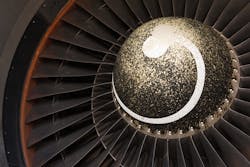Pratt & Whitney to develop Advanced Variable Speed Power Turbine for Army rotorcraft
EAST HARTFORD, Conn., 28 Nov. 2012.Pratt & Whitney, a unit of United Technologies Corp. (NYSE:UTX), won a U.S. Army contract to research and develop an Advanced Variable-Speed Power Turbine (AVSPOT) able to meet the range and lift requirements for current and future force rotorcraft.
The goal of the AVSPOT program, an initiative of the U.S. Army's Aviation Applied Technology Directorate in collaboration with NASA, is to develop turbine technology that improves the performance, efficiency, and affordability of rotorcraft engines. The aim is to validate that technology in a laboratory environment by 2016.
Pratt & Whitney engineers are setting out to develop a power turbine that enables future medium and large rotorcraft to hover at up to 10,000 feet and cruise at altitudes up to 25,000 feet, while also maintaining high operating efficiency. Additionally, AVSPOT is intended to enable rotorcraft to optimize power turbine speed in the range of 55-105 percent (current state-of-the-art power turbines operate in the 95-105 percent speed range), while optimizing fuel consumption, cost, weight, and durability.
"We're confident we will be able to meet the mission profile requirements needed for future rotorcraft engines," says Annette Jussaume, general manager, Small Military Engines. "We have the technology know-how that will allow us to develop an efficient high-power turbine that can operate over a wide range of engine speeds."
Enabling higher power and rotor speed for takeoff and climb, and also slower optimized rotor speed at cruise presents a significant challenge. To this end, Pratt & Whitney engineers are taking a technological tack that reduces the speed of the power turbine while optimizing its efficiency.
Follow Avionics Intelligence news updates on Twitter (@Avionics_Intel), LinkedIn, and Google+.
Image courtesy Shutterstock.
